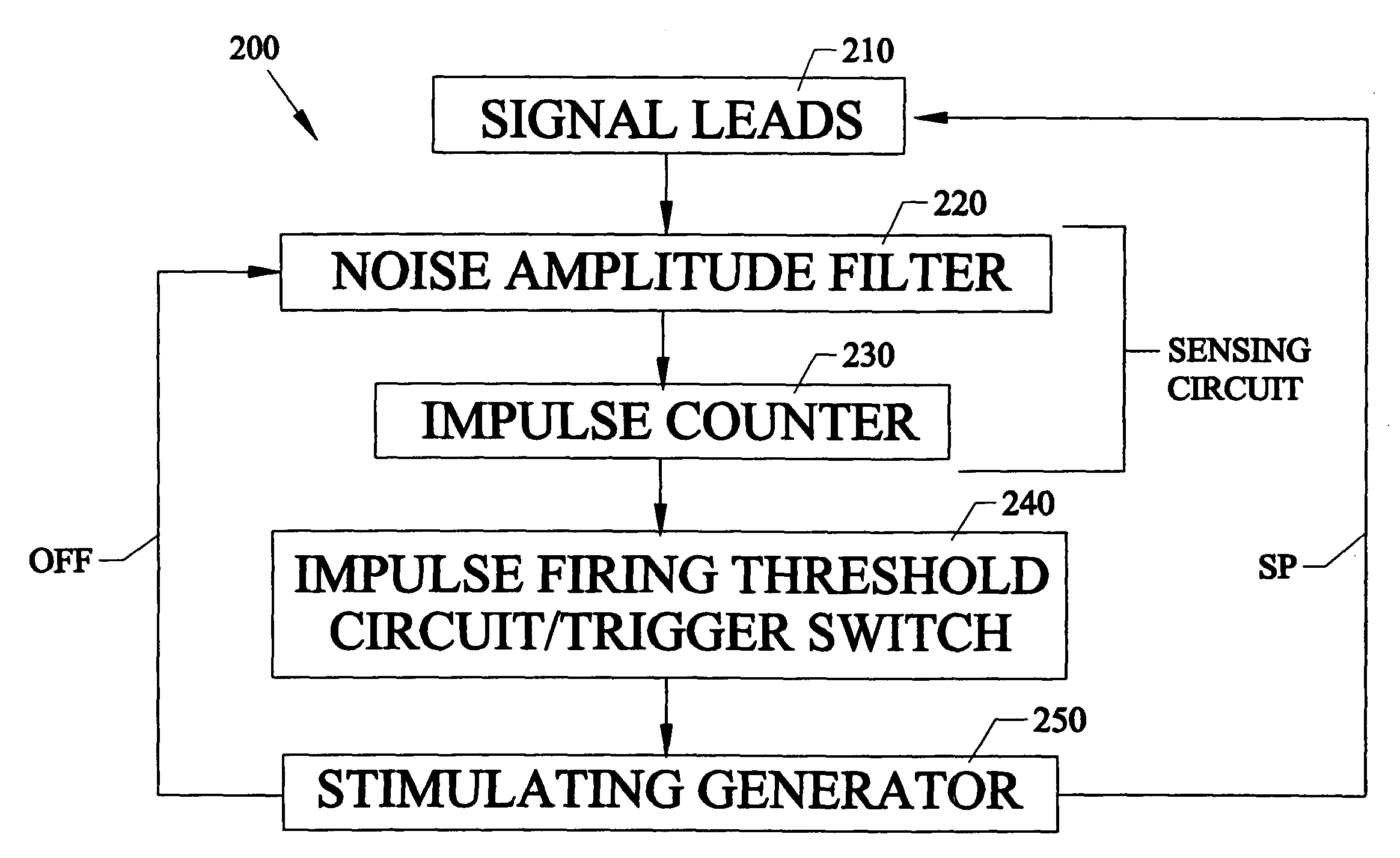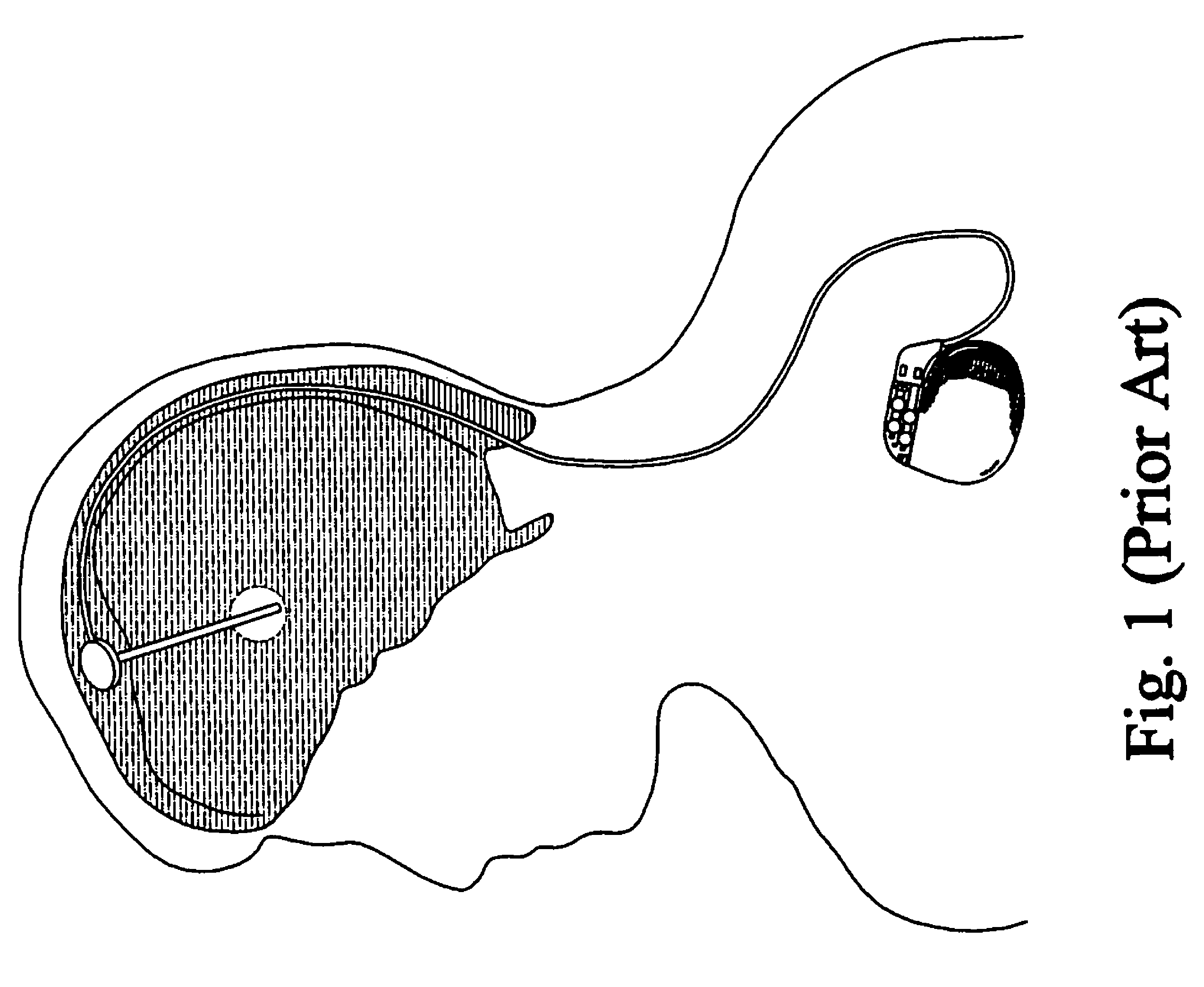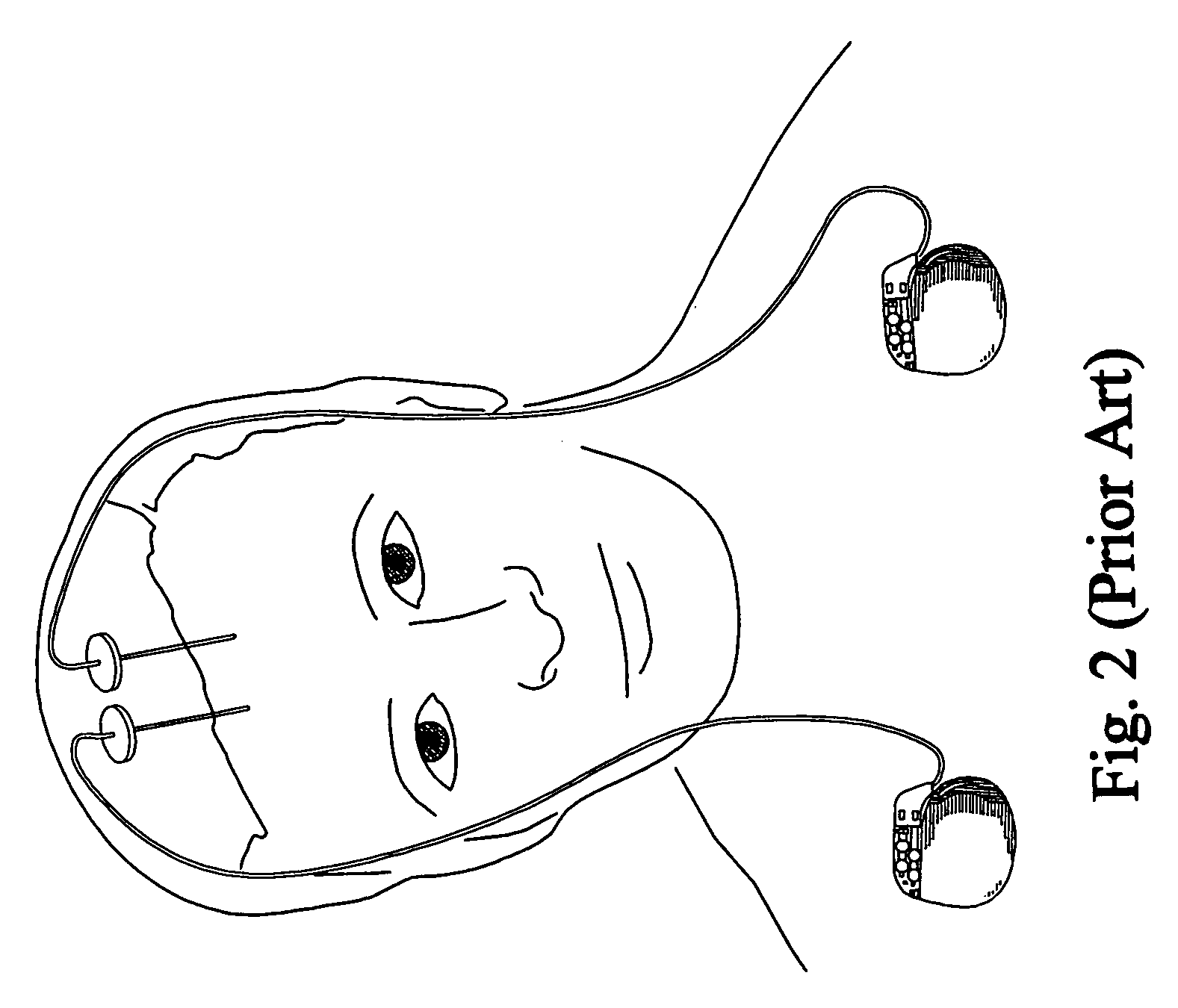Spatial-temporal deep brain stimulation methods and systems
a deep brain stimulation and spatial-temporal technology, applied in the field of deep brain stimulation, can solve the problems of poor patient comfort, poor clinical effect, and loss of effectiveness, and achieve the effects of improving patient comfort, facilitating clinical effect, and being convenient to us
- Summary
- Abstract
- Description
- Claims
- Application Information
AI Technical Summary
Benefits of technology
Problems solved by technology
Method used
Image
Examples
Embodiment Construction
[0054]Before explaining the disclosed embodiments of the present invention in detail it is to be understood that the invention is not limited in its applications to the details of the particular arrangements shown since the invention is capable of other embodiments. Also, the terminology used herein is for the purpose of description and not of limitation.
[0055]This invention provides methods, systems and devices to reduce power demands substantially for DBS (deep brain stimulation), allowing for miniaturized type components to be integrated with the implanted probe(s) themselves, see FIGS. 5a, 5b, 6 and 10. The invention avoids implanting large and cumbersome card-deck size batteries in the chest area and the use of vulnerable wire leads under the skin from the chest area to connect with the implanted electrode(s) on the skull. Notably, the remote stimulator / battery with its associated wiring are the chief source of complaints in the use of this technique. Other advantages of this i...
PUM
 Login to View More
Login to View More Abstract
Description
Claims
Application Information
 Login to View More
Login to View More - R&D
- Intellectual Property
- Life Sciences
- Materials
- Tech Scout
- Unparalleled Data Quality
- Higher Quality Content
- 60% Fewer Hallucinations
Browse by: Latest US Patents, China's latest patents, Technical Efficacy Thesaurus, Application Domain, Technology Topic, Popular Technical Reports.
© 2025 PatSnap. All rights reserved.Legal|Privacy policy|Modern Slavery Act Transparency Statement|Sitemap|About US| Contact US: help@patsnap.com



